
中學治身心,西學應世事 有拍必回,大家互相加油呀
A year of stagnant tourism, how did these places fare?
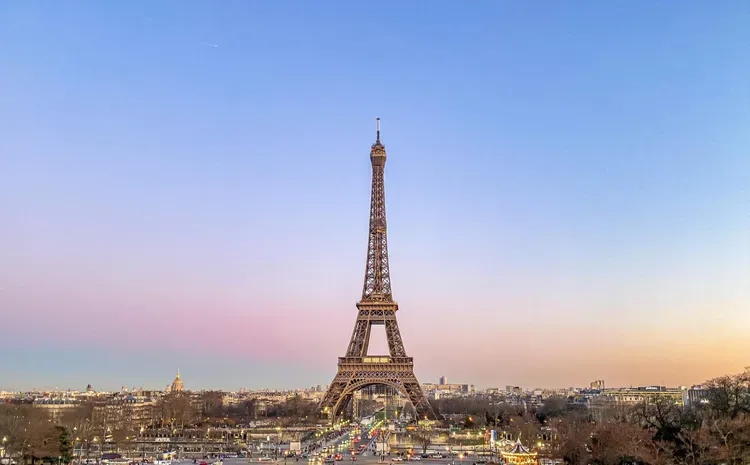
On March 11, 2020, the World Health Organization declared that the outbreak of the novel coronavirus had reached pandemic proportions, with an alarming extent and severity of transmission. Immediately following this, international travel came to a standstill, countries closed borders, airlines cancelled flights, and cities around the world went into lockdown, with increasing losses in terms of lives, health and livelihoods.
The tourism industry and all the people who depend on it have taken a staggering hit. According to statistics from the Organization for Economic Cooperation and Development, the global tourism economy is expected to shrink by around 80% in 2020 when all figures are included.
As the first anniversary of the pandemic was announced, The New York Times visited places in the world that rely heavily on tourism to see how they have adapted during the year.
Hoi An, Vietnam: Back to the Ocean
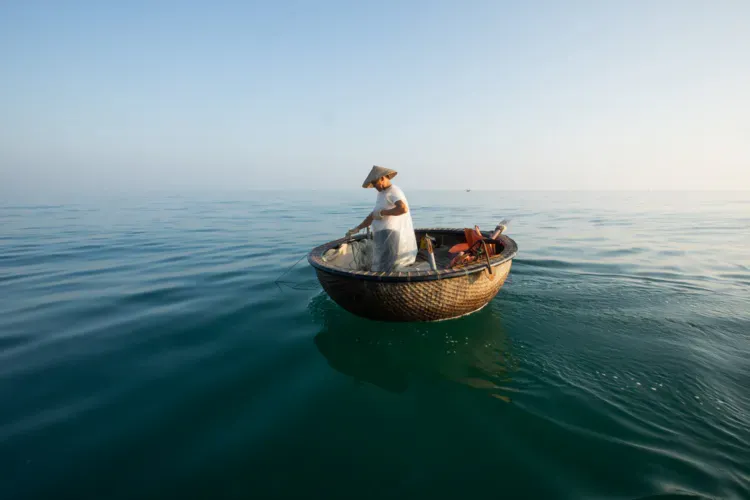
In central Vietnam, Le Van Hung, 51, is on his basket boat, fishing for a living during the pandemic. Photography by Rehahn C.
In central Vietnam, bypassing the clucking chickens, Le Van Hung walked out of his old house under a coconut tree with unease and hope, followed a short path, and found the waves, the sky and the sun by feeling.
After months of storms, the sea is now calm and he can safely paddle his basket boat, fish and catch crabs in the South China Sea and support his family.
The 51-year-old has worked for many years as a deep-sea fisherman on a big fishing boat. But in 2019, he gave up the profession to help his daughter run a beachside restaurant. The restaurant opened in Hoi An in 2017, in a historic port, just in time for the city's tourism boom due to a surge in Western adventurers and Asian tour groups.
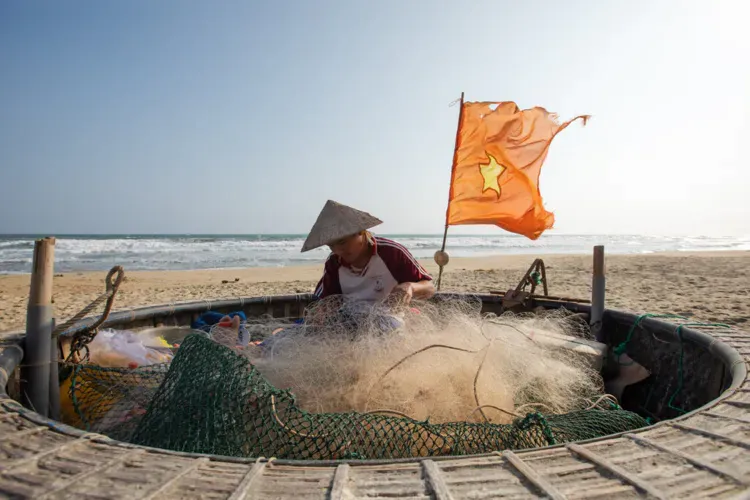
Le Van Hung inspects a basket boat full of nets. In August, he bought the boat for 8.5 million dong (about 2,400 yuan), almost using up the family's savings. He would fish about half a mile from shore. Photography by Rehahn C.
When the virus hit in early 2020, the tourists disappeared and the family lost most of their income. In November, a particularly brutal monsoon engulfed their restaurant on the dunes into the sea.
Now, like many people in Hoi An who have given up fishing to work as waiters, security guards or speedboat drivers in the tourism industry, or run their own companies to cater to the needs of tourists, he has returned to the most familiar places, relying on the wind and waves to make a living.
Le Van Hung is short, slightly hunched, and has a bad waist. He has to support six relatives, and they all huddle together under a mud-tiled house with wooden shutters. There are not many rooms. Their lives were barely passable.
Since September, it has been stormy and the sea is turbulent, and Le Van Hung has been afraid to go into the water, for fear that his boat the size of a hot tub will capsize. In late February, looking at the waves, the half-brick toilet of the restaurant was still buried under the messy beach. He told himself: the day after tomorrow it will be safe.
So, at sunrise on a recent Tuesday, Hung rowed his boat in 3-foot waves. About 400 yards from shore, in the sea-blue water, he began to unroll his transparent fishing net. He began rowing with the net, which formed a 6-foot-deep strainer that eventually stretched over 500 yards and began catching schools of fish.
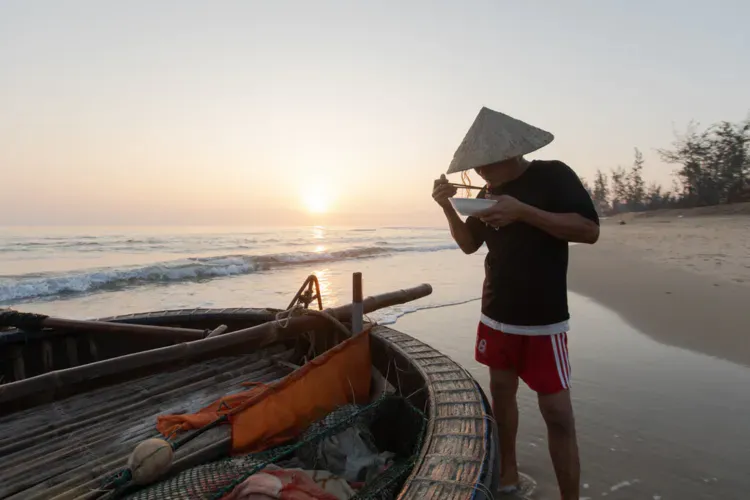
At sunrise, they will go fishing for 2 hours, and Hung now eats noodles by the boat to replenish energy. Photography by Rehahn C.
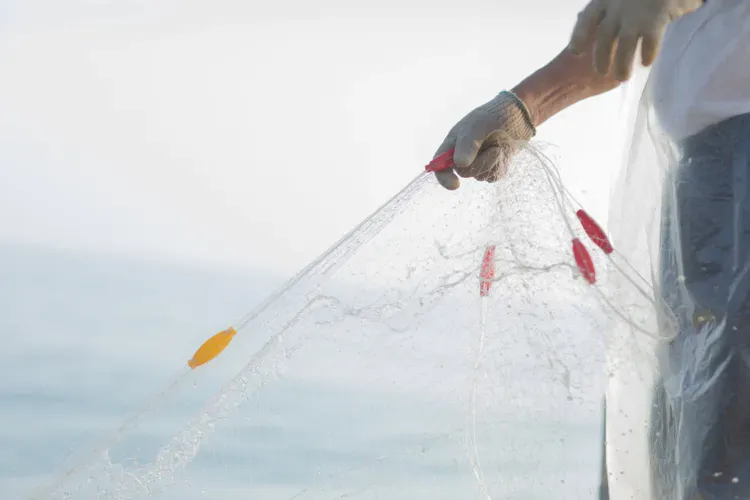
The sea was as calm as it was meditating, but Hung worried about the empty fishing net after yard after yard.
Mr. Hung grew up in Hoi An, which has been a fishing community sandwiched between turquoise seas and emerald rice paddies for centuries. The atmospheric old town is lined with long wooden Chinese shops and mustard-colored French colonies.
Over the past 15 years, developers and international hotels in Vietnam have invested billions of dollars in building seaside resorts, and locals and expats alike have opened hundreds of small hotels, restaurants and shops in and around the city's historic core . International tourists flock here, filling the beach by day and the old town by night. The outbreak has hit Hoi An especially hard because of its over-reliance on foreigners. In 2019, of the 5.35 million tourists it received, 4 million were from abroad.
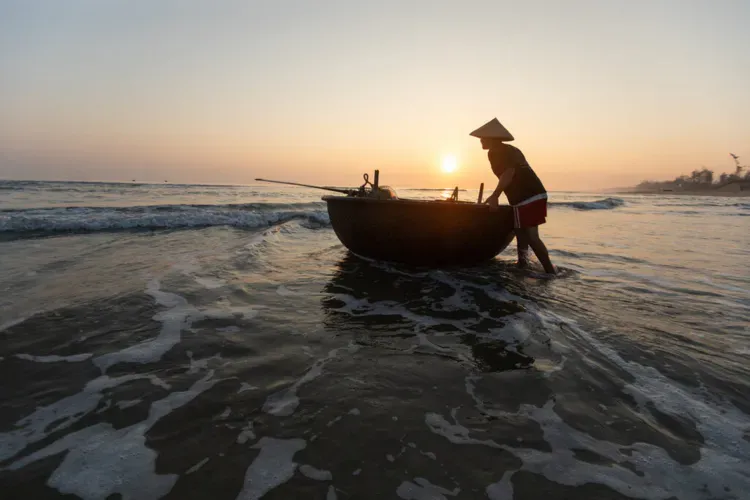
Hung pushes the boat into the sea. On this day, dozens of fishermen went out to sea alone in basket boats, and some even took risks in the middle of the night. Photography by Rehahn C.
Around the old town, hotels have sprung up on Tan Thanh Beach near Mr. Hung's home. In 2017, Mr. Hong's family borrowed dozens of sun beds and thatched umbrellas from relatives and set up an open-air restaurant on the dunes behind the house.
His 23-year-old daughter, Hong Van, cooks seafood such as shrimp, squid, spring rolls, and his two sons help cook and serve guests, and he does the dishes. In the summer of 2019, Hung quit the deep-sea fishing fleet entirely, believing that tourism was their ticket to a better life.
Mr Hung, a widower, said through an interpreter: "I'm happier. It's very relaxing to work from home, and it's very comfortable to work on a daily basis with my family."
He earns five times as much every month as when he goes out to sea, and earns three million dongs a month from fishing, or about 850 yuan.
But the virus swept through Southeast Asia, and Vietnam imposed a nationwide lockdown for most of April, leaving restaurants empty.
Then, just as locals were hopeful of a nascent tourism recovery, Vietnam suffered a second outbreak in July. The whole of Hoi An was paralyzed for several weeks.
With his savings nearly depleted, Mr Hung knew he had to get back at sea. By August, he had mastered the art of navigating the waves with a single paddle-propelled basket boat, and his daughter had sold his surplus of fishing gear on Facebook. But with the 2020 rainy season extending into 2021, the sea has become too dangerous.
The fishing boat swayed in the calm waters, and Mr. Hung, donning a plastic smock and gloves, began to pull and roll the net into a pile. Occasionally, he would pick out a small jellyfish as clear as a round ice cube. After 20 minutes, there was already a 5-inch whitebait and a small crab in the net skirt, and another small fish after 15 minutes.
Because the sea is stingy, Mr. Hung rowed back again. He told himself that grilling fish would save pennies, while frying it would waste oil. He dreams of a bountiful catch.
"Hopefully, but I never know what's going on underwater," Hung said.
Skagway, Alaska: A Cruise Town Without a Cruise
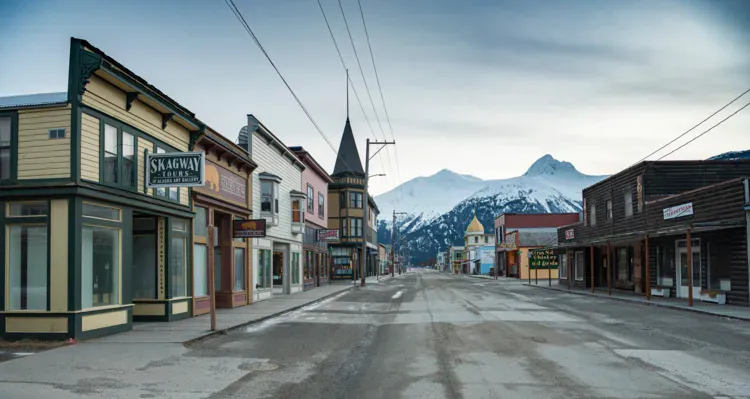
Tourism is Skagway's only industry, and the Broadway, the main road here, is now deserted. Photography by Christopher Miller.
This is the time when Skagway residents generally start taking summer seriously. This is no joke, because May to September is the tourist season, and they want it to make a year's worth in 5 intense months. On busy summer days, 13,000 passengers disembark from cruise ships to experience this gold rush-era town in southeastern Alaska, surrounded by glaciers, mountains, deep fjords and the wilds of the Tongass National Forest.
Despite the town's annual population of just over a thousand people, before the pandemic, Skagway was the 18th most popular cruise port in the world, generating $160 million in annual tourism revenue. In the summer of 2020, 1.3 million tourists were expected to stroll the Broadway, Skagway's main thoroughfare, with historic saloons and hotels turned into souvenir shops. It's a tourist-centric town, and even Mayor Andrew Cremata has a side job of doing tours at the marina.
The pandemic has turned the prosperous town of Skagway, propped up by cruise ships, into a ghost town. In 2020, there are no cruise ships, and 2021 looks grim. To make matters worse, the pandemic has not only devastated its economy, it has also cut off Skagway's land links with the rest of the world. The only road out of town is the Canadian border 20 miles from town, but it's now closed.
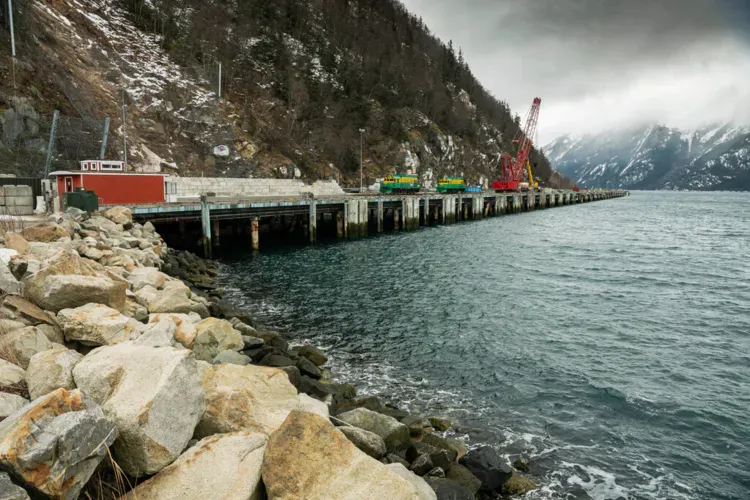
An idle crane on the empty main cruise ship terminal in Skagway. During the busy summer months, there are usually 4 cruise ships docked here and thousands of passengers flood the town's streets. Photography by Christopher Mille.
To avoid a mass exodus of residents, the town has come up with a unique approach. Instead of reserving CARES Act stimulus money for municipal operations, as elsewhere in the U.S., leaders in Skagway have redistributed much of the money to residents. Every full-time resident, regardless of age, will receive $1,000 a month from June to December 2020, with one condition: They must use the money in town. The money can be used to pay the mortgage, shop at the town's two grocery stores, buy home improvement items at the hardware store, or visit a DVD rental store, but you'll need to provide a receipt to prove it was a local purchase.
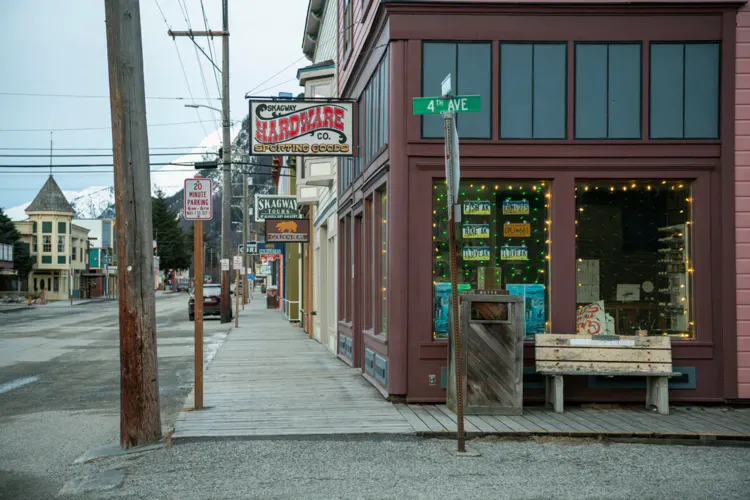
The Skagway Hardware Company is one of the local businesses where residents can spend a $1,000-a-month stimulus stipend as a reward for staying in town. Photography by Christopher Miller.
For local leaders such as Mayor Andrew Cremata and Skagway Heritage Council chair Jaime Bricker, the rationale is simple: ensure the survival of the town until the tourists return. They started vaccine distribution, coronavirus testing, paying residents' Medicare insurance, helping the town's food bank and schools, among other projects. The mayor said, "A year ago, we had a goal to make it to the 21st tourist season. This goal is well done, and we want to make it through the 2021 tourist season." He paused and continued: "So Now, we have to set a new goal."
Andrew Cremata is referring to the fact that on February 4, the Canadian government extended the ban on cruise ships in its territorial waters until February 28, 2022. With this decision, Skagway's 2021 summer travel season has come to nothing.
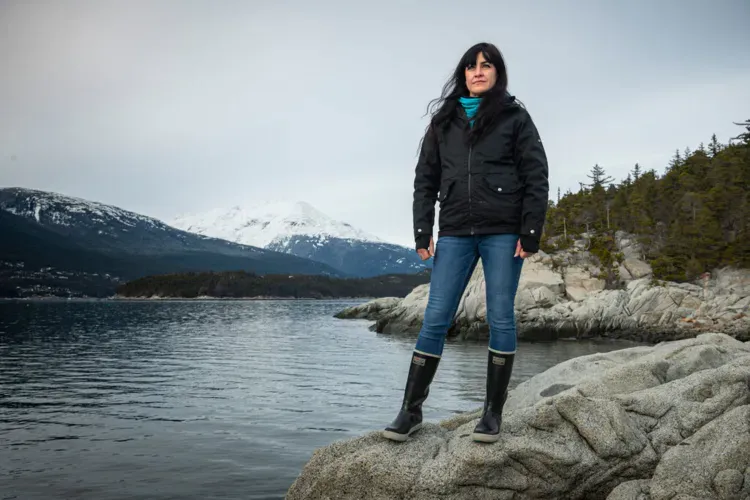
To ensure Skagway's survival, leaders like Jaime Bricker, chair of the Skagway Heritage Council, have an idea to give residents stipends until tourists return. Photography by Christopher Miller.
The town's leaders have tried various methods. For example, they have come up with a "Save Our Skagway" campaign to encourage workers from previous tourist seasons to come back and visit. "You can come here and have the best vacation of your life, in a town with no traffic jams, without having to work 70 hours a week and doing all the things you haven't done in previous summers," Andrew Cremata said.
But no one expects this package, or any other, to make up for the cruise ships that flooded in earlier summers. "Businesses here are used to the size of the cruise industry," Jaime Bricker said.
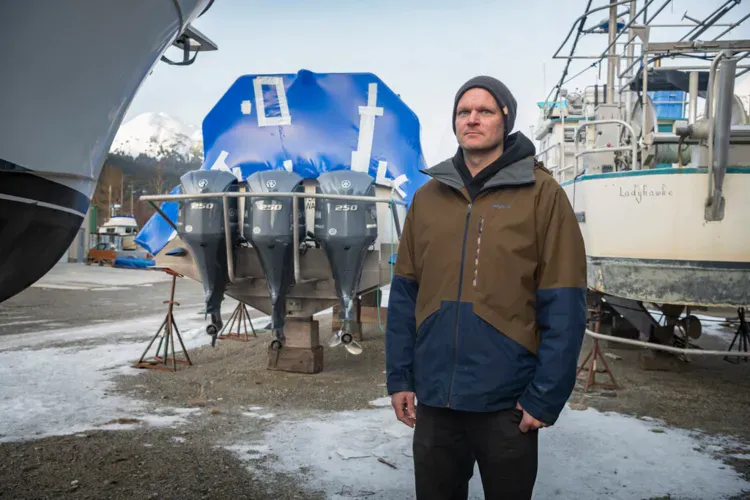
Ashley Call, owner of Ocean Raft Alaska, has three ships that have been mothballed for nearly two years. Previously, he expected 2020 to be the busiest season ever. Photography by Christopher Miller.
This is certainly the case for Ashley Call and his company Ocean Raft Alaska. “The more cruise ships, the better. Honestly, in Skagway, that’s how most tourism businesses are. You have to have a lot of cruise ships to open.” He said that until the cruise ships come back, they will be working in the construction industry.
To get through 2021, the town's mayor hopes that all new stimulus packages will include funding for such hard-hit cities. More than just surviving another year, the mayor said the current situation has caused residents to question the future of tourism and Skagway.
The mayor said, "What helps Scagway? Not only from an economic perspective, but from a personal perspective, is it healthier when you don't have kids and work 70 hours a week or have a more sustainable economy? ? People used to say, I wouldn't even go to Broadway. When the cruise ships came, I wouldn't even go to the post office."
He laughs: "In Skagway, there's always been a binary opposition. People here like tourists, even though people will complain about going to Broadway. So do I."
Paris: Let people bring meals to the kitchen, not to mention life
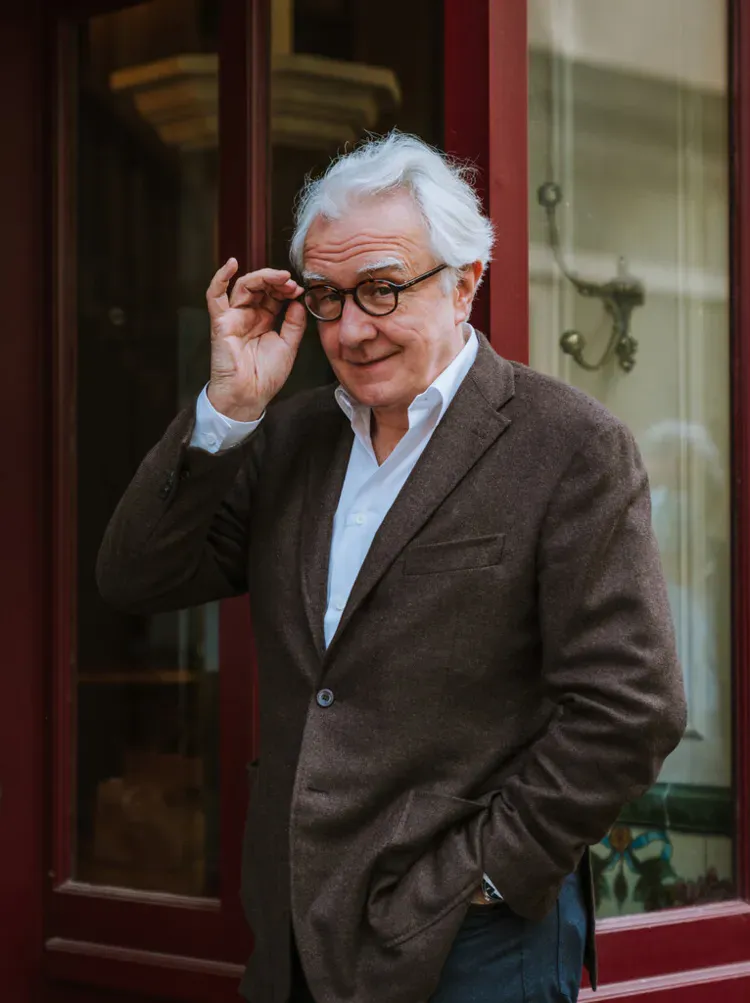
Famous chef Alain Ducasse has switched to takeout at his Parisian bistro, Aux Lyonnais. Photo by Joann Pai.
Usually, the restaurant Aux Lyonnais is the go-to place for a classic Parisian business lunch. Cozy and cosy, it is located in a building from the 1890s, close to the offices of the Paris Stock Exchange, Le Figaro and AFP. The bistro is packed every day with business executives, journalists and government officials looking to dine in delight with traditional Lyonian cooking.
Today, the restaurant's blood-red exterior still looks the same, but it's quiet inside. The simple iron-framed oak table was left naked without the tablecloth, dinner plates and balloon wine glasses. Some of the bistro chairs have been put into the pantry, the zinc bar is polished and the oversized beveled mirrors, the creamy white wall tops, the green and rose tiles have been wiped clean, waiting for the Paris restaurant to open. Moment.
The owner of Aux Lyonnais, Alain Ducasse, was a little disappointed. Over the years, he has been crowned by Michelin and rich people from France and around the world have flocked to his restaurants. Between 40% and 60% of the customers of Alain Ducasse's restaurants in Paris are tourists, including his 3-star restaurant at Plaza Athénée, his 2-star restaurant at Le Meurice Hotel, Aux Lyonnais, Ducasse sur Seine, Rech, Benoit, Allard, Spoon and Cucina.
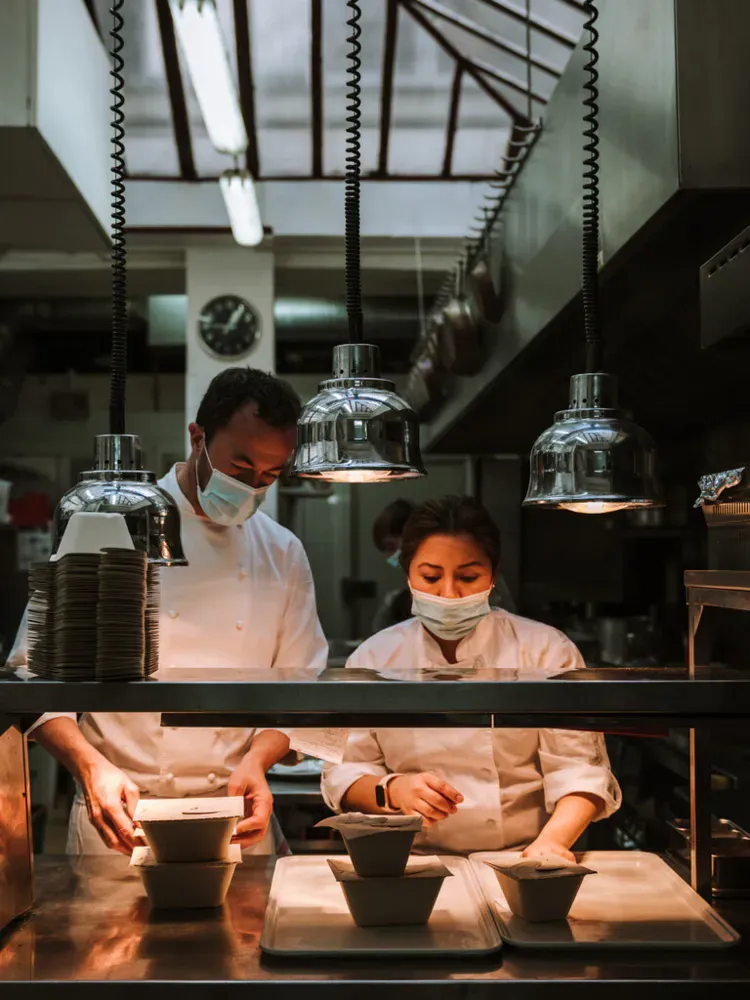
Marvic Medina Matos (above right) in the restaurant kitchen, she is the chef who designed the new menu for "Naturaliste", Aux Lyonnais temporarily became "Naturaliste". Photo by Joann Pai.
The epidemic has upended his world and the entire French food industry. Restaurants and cafes across the country have closed their doors, not knowing when they will reopen.
Like many chefs here, 64-year-old Alain Ducasse has turned to takeout, but not regular. He temporarily changed Aux Lyonnais to "Naturaliste," and transformed the kitchen, which once served classics like barracuda roulade with a rich Nantoa sauce, and veal liver with parsley and potatoes, into what he calls "healthy" "A hub for dishes - no meat, salt, sugar or dairy, mostly fish, soy, fruit and vegetables.
Starters are 6 to 9 euros, mains 12 to 14 euros, desserts 7 euros. Along one wall of the restaurant, there are dozens of boxes of meals waiting to be delivered (roughly 100 to 150 a day).
Alain Ducasse said: "I like the crazy way."
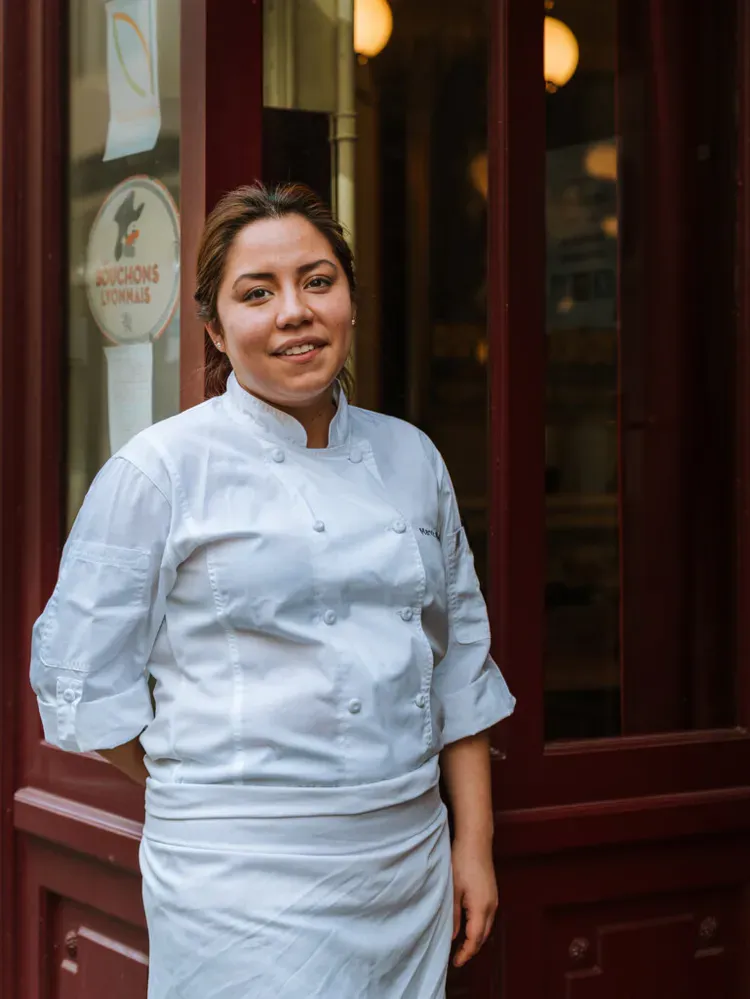
Marvic Medina Matos of Naturaliste, photo by Joann Pai.
Marvic Medina Matos of "Naturaliste" is a 25-year-old chef from Peru. She and her staff have crafted a menu that includes kippers with pumpkin, red onion and hummus, smoked eel, cabbage and pine nuts, roasted apples with ginger, chestnut cream and caramelized coffee, and soy milk Chocolate mousse. Their idea was to create a whole new menu that could be prepared ahead of time.
The day's work begins at 9am, with Marvic Medina Matos and most of her team of six arriving at the restaurant. "Naturaliste" has 11 independent wholesale suppliers, including fish, grains, seasonal fruits, vegetables and eggs, who deliver in advance every day or every other day.
The team donned white chef coats and aprons and began to work together. A trainee chef handles appetizers and kippers. Another young chef is in charge of the main course, making soup with onions and carrots, chopping mustard greens, and adding lentils. An apprentice was in charge of dessert, and he made puff pastry with flour and jam with lemon and kiwi.
The process goes very fast. Once the order is printed out, Marvic Medina Matos announces it aloud, and the team replies "Okay!". After three to four minutes, the dish is ready.
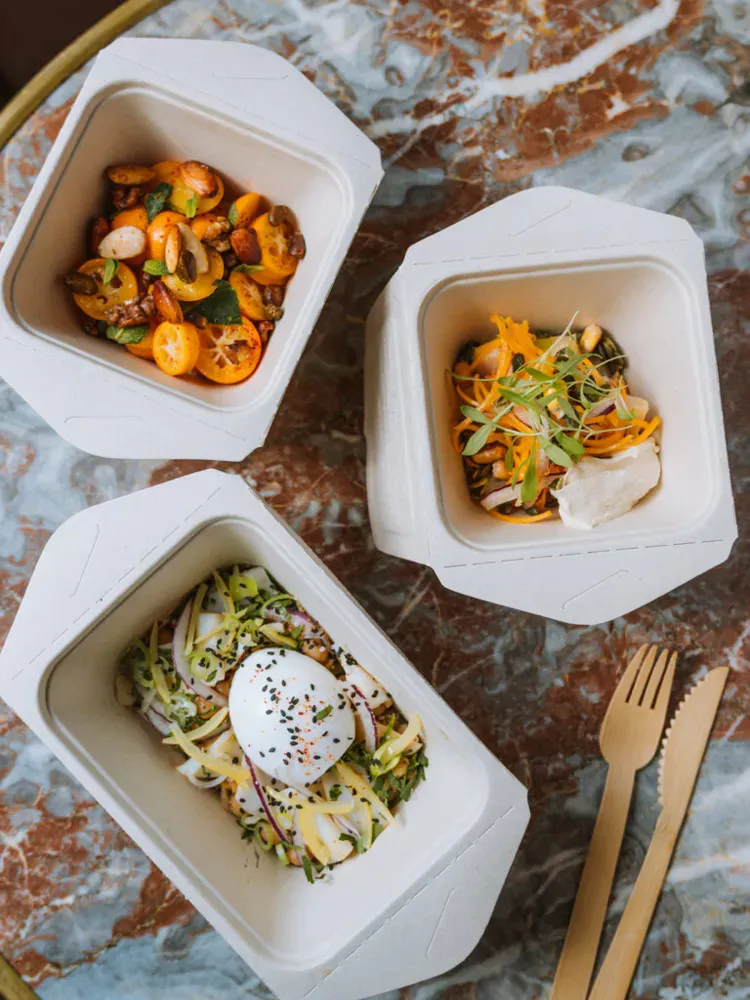
The "Naturaliste" menu includes whitefish kippers, stewed chickpeas, pumpkin, octopus, soft-boiled eggs and caramelized dried fruit.
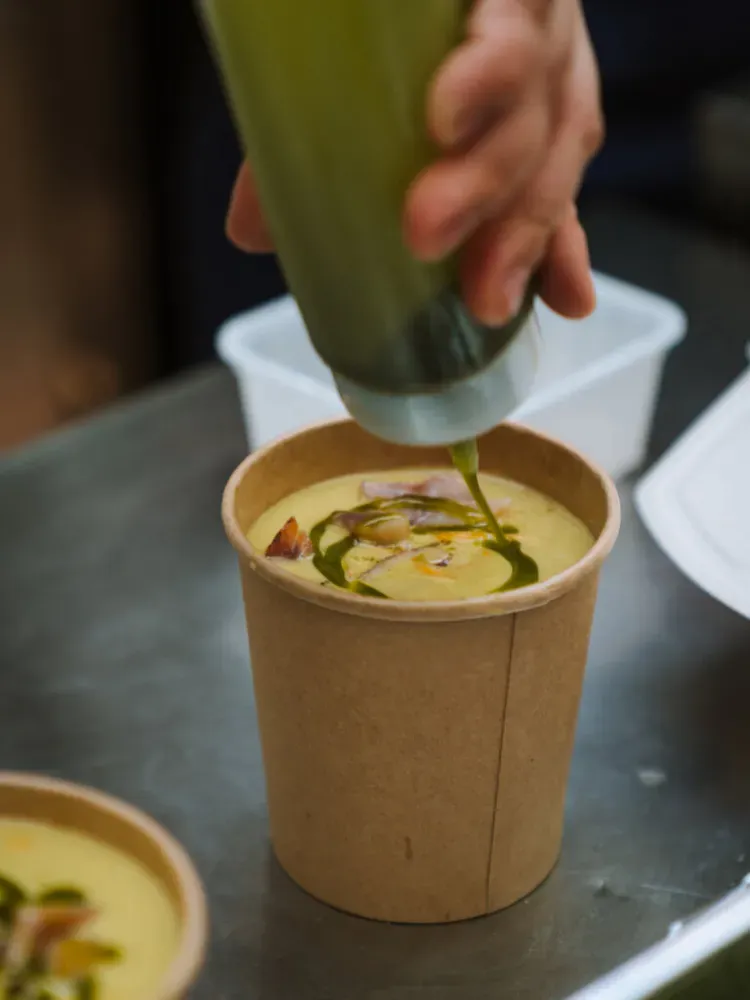
Well cooked smoked herring vegetable soup.
Everyone on the team is responsible for packing the meals into boxes made of cane syrup, and the cutlery is packed in an envelope with the word "Naturaliste" printed on the front made of bamboo. An operations manager packs the boxes and handles distribution through several services, including resto.paris, which is backed by the city of Paris.
For now, takeaways allow at least a few of Alain Ducasse's employees to keep working and maybe make some money. Dining in Paris is, of course, for the food, but also for the "le partage", the shared experience to be enjoyed together in the space of a restaurant.
Alain Ducasse said: "In France, the ceremony begins when you put six people around a table to enjoy a meal. You open a bottle of champagne. Then you discuss what to eat. Then you order, and when the food comes, Then discuss what you're eating. After that, discuss what you're eating. Finally, discuss what you're going to eat next week. People want to socialize over a good bottle of wine and look at beautiful, well-dressed women instead of just sitting Look at your spouse at the kitchen table."
"It's not about having people send food to the kitchen."
Apollo Bay, Australia: The barely surviving zombie business
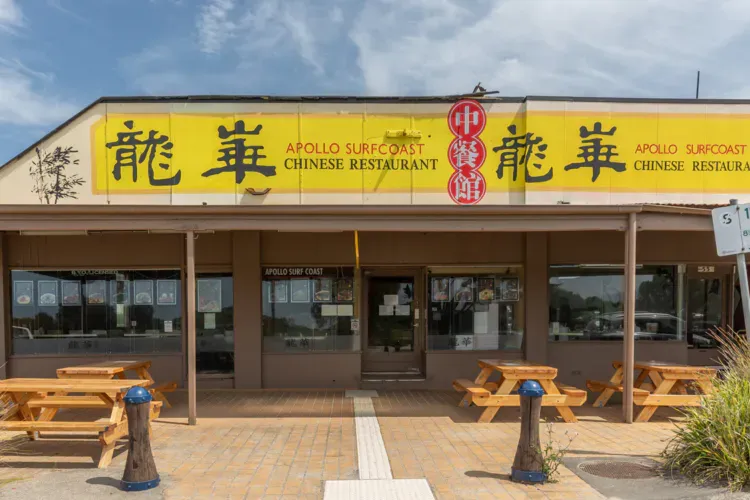
Most Chinese restaurants in Apollo Bay have been closed since March 2020. Before Australia's borders closed, it mainly served Chinese tourists. Photography by Asanka Brendon Ratnayake.
Located in the southeastern Australian state of Victoria, Apollo Bay is a 150-mile-long beach town along the Great Ocean Road and a popular destination for coastal day trips during the tourist season.
Apollo Surfcoast Chinese Restaurant, a beach-facing restaurant with front and rear access, hosts nearly 200 customers at a time who want a quick taste of hometown. But now, at lunchtime, the dining room is dark. The large wooden tables and benches that were installed on the sidewalk just before the epidemic were nowhere to be seen.
In 2012, Michelle Chen opened this restaurant when she traveled around the Great Ocean Road and found that there was no place for her Chinese stomach. With the rapid growth of Chinese tourists in the area, she saw an unmissable opportunity and it paid off, but that stopped last year.
In 2017, China overtook New Zealand to become Australia's largest overseas travel market. In 2019, in Victoria, with Melbourne as the capital, Chinese tourists spent 3.4 billion Australian dollars (about 17 billion yuan, more than the next 10 international markets combined), accounting for nearly 40% of all international overnight tourist spending. In the same year, 45 per cent of Chinese overnight visitors to Victoria visited the Great Ocean Road region.
With China's growing middle class and its proximity to Australia, the decade-long tourism boom has prompted tourism businesses in smaller communities such as Victoria and Apollo Bay to find ways to adapt, such as creating bespoke experiences, hiring clubs Chinese-speaking staff, translated menus and national park signage, etc.
But Australia banned flights from China on February 1 last year and foreign travel in March, as if someone had turned off the tap.
"Almost all my business is gone," Ms Chen said. The restaurant has been closed since March last year, except for a little bit around Christmas.
On one side of the Great Ocean Road is the rugged jungle, on the other side is the surfing holy land, and further ahead, is the Twelve Apostles, a natural attraction that rises from the water and is made of limestone piles and is very popular. Sue Ladewig, head of Victoria Park's commercial team, said: "At the peak of the Lunar New Year period, there are many tourists here, but this year I have it all."
Strict border closures, lockdowns and mandatory quarantines have allowed Australia to better control the virus, with 909 deaths out of a population of 25 million. But Australia may remain closed until 2021, and businesses that depend on foreigners may not survive.
Evergreen Travel Service offers Mandarin-speaking tours, and customers from China account for about half of its customers. During peak season, they send 16 to 20 buses a week to the Great Ocean Road. General manager Tom Huynh said: "If there are now less than 10 tour groups, you are lucky."
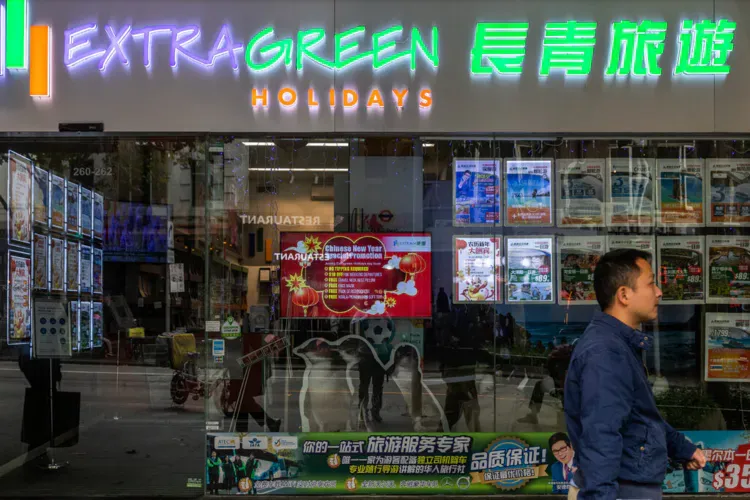
Evergreen Travel in Melbourne's CBD closed in February after the company announced it was entering a phase of liquidation. Photography by Asanka Brendon Ratnayake.
Mr Huynh said the Melbourne-based travel agency, which was founded in 1994, had cancelled the insurance and registration of more than 20 buses, which had been sitting idle in warehouses.
In late February, Mr Huynh said the company had entered a phase of liquidation and employees, including him, had been fired.
At the Apollo Bay Bakery, owner Sally Cannon said she removed the Chinese sign from the window after the travel ban went into effect. For years, it's been promoting the store's signature scallop pie.
Sally Cannon said: “We thought, let’s just say it, probably won’t change for a long time.”
Business has picked up for Sally Cannon as most tourists from Victoria have returned to Apollo Bay after an emergency lockdown in February.
Max Zaytsev, who runs a travel company with Bilby Travel, whose clients are mainly Southeast Asians and Americans, has little time to adapt to the changes. Before the pandemic, Max Zaytsev took out a loan to buy four luxury passenger cars and still owes an expensive monthly payment.
In desperation, Max Zaytsev tried to change careers as a courier. He removed the seats of a small passenger car and loaded it with express packages, but the income was still not enough. He tried to diversify again, applying for certification in April, paying about $5000 to transport people with disabilities in his car.
He said: "Do you know how many jobs I've found? None, zero. I'm just trying to do whatever I can."

The Twelve Apostles on the Great Ocean Road, Victoria, Australia. During the peak season, tourists are crowded here. Photography by Asanka Brendon Ratnayake.
Like many Australians whose businesses or jobs have been affected by the outbreak, Max Zaytsev, who lives in Melbourne, receives a fortnightly payment of $1000 from the government called JobKeeper, but it expires at the end of March .
For tourism businesses like theirs, Max Zaytsev said: "We look like we're still alive because there's still JobKeeper support, but we're already zombies."
Singapore Changi Airport: waiting for tourists who won't come
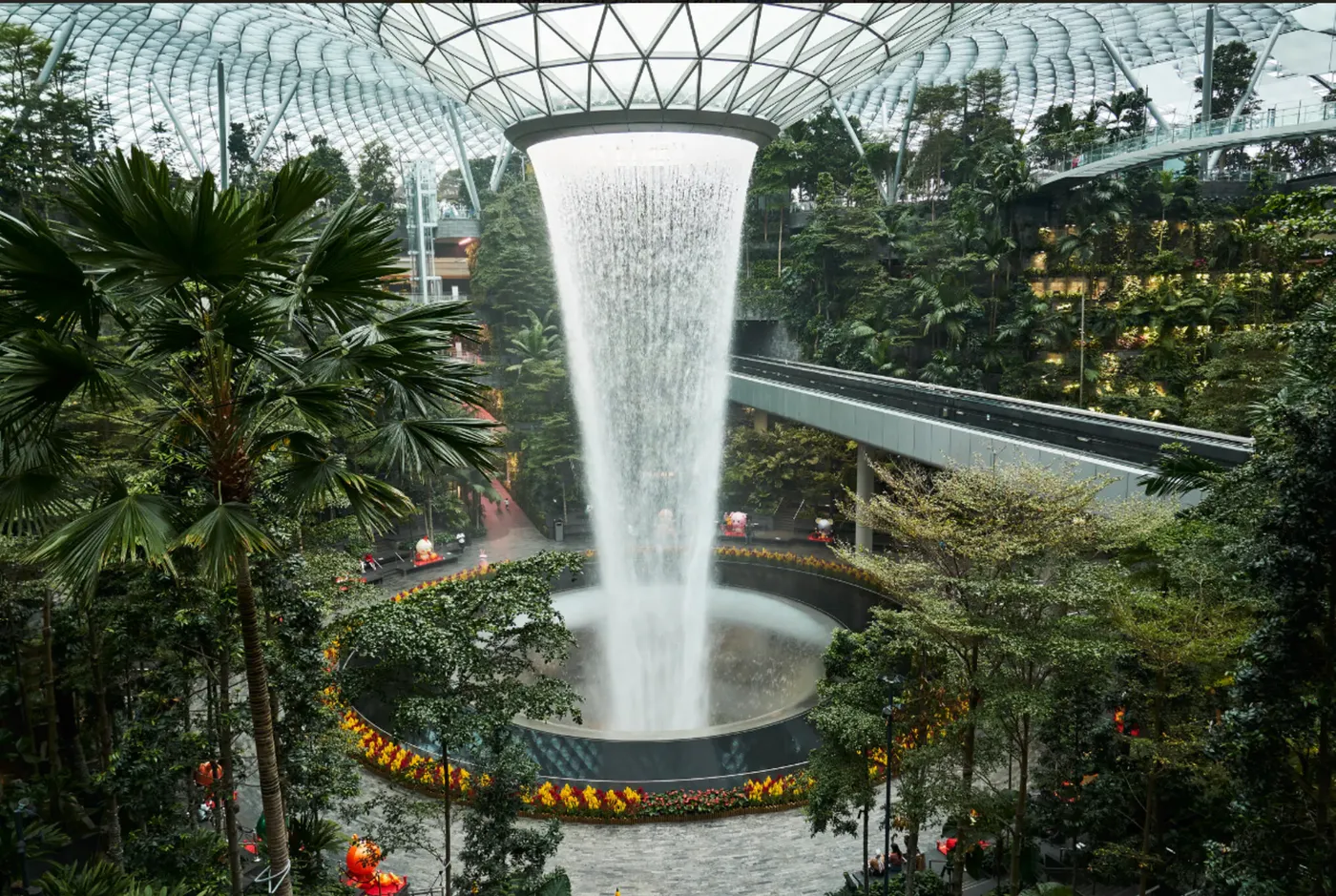
This year, Singapore Changi Airport was largely empty. In 2019, it opened a $1.3 billion trendy shopping and entertainment complex with a towering waterfall. Photography by Lauryn Ishak.
On a recent Thursday morning at Singapore's Changi Airport, six people sat on plush chairs in the lounge, banging on their laptops. Every other chair, a sticker reminds people that "keeping a safe distance is to keep everyone safe." Gone are the buffets and snacks, replaced by croissants and coffee brought by the waiters.
Alyss Leow, a 36-year-old human resources executive who works at the lounge every two to three weeks, pays $200 for a three-month membership.
"There are times when I don't want to work from home," Alyss Leow said. "It's a sweet place and it gives you the kind of mental rest you need."
Two years ago, Singapore Changi Airport was booming. It opened a stylish $1.3 billion shopping and entertainment complex with a movie theater and the world's tallest indoor waterfall. It has been voted the world's best airport for seven consecutive years, and also set a record for 63.8 million passengers in 2019.
The virus then spread globally, with passenger traffic at Changi Airport dropping nearly 83% last year. The airport's net profit fell 36 percent to about $327 million. The airport has suspended construction of its fifth terminal. In January 2020, 33,000 flights departed from Changi Airport. In January, that number dropped to 7,500.
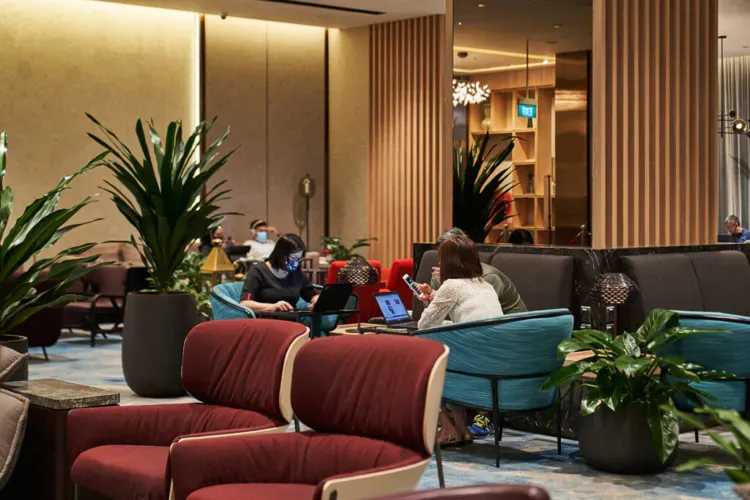
The lounge at Changi Airport, originally dedicated to passengers, has been transformed into a co-working area. Photography by Lauryn Ishak.
In response to the economic slowdown, the airport decided to focus on its only market right now: Singapore residents. Before the pandemic, many locals flocked to the airport to eat, shop and study. In order to adapt to the epidemic, the high-level airport has provided camping and go-karting activities, transformed the Changi lounge into a co-working space, and invited parents to bring their children to visit and stay overnight.
Analysts say the efforts are mostly stopgap measures to let airports ride out a little bit before tourists come back, but won't meaningfully improve revenue.
"Until things get better, airports are mostly hibernating. For Changi Airport, 2021 will be worse than 2020," said Brendan Sobie, an independent analyst at aviation consultancy Sobie Aviation in Singapore.
Analysts say Changi's recovery from the pandemic will be tougher than most of its peers, as an airport that relies entirely on international markets.
However, the suspension has also caused the airport to rethink its role in a post-pandemic world. It has always been a destination in its own right, but the pandemic has given it a reason to embark on a more ambitious experiment: Can airports attract people to stay longer?
Changi Airport is mostly in hibernation until travel resumes. Photography by Lauryn Ishak.
Jayson Goh, general manager of operations management at Changi Airport, said the airport's executives have started to think about how to give travel-hungry Singaporeans a new way to experience Jewel, a mega-shopping complex.
They came up with a "Glampcation in the Clouds" campaign, with 10 tents set up in the airport's empty plaza, facing the famous waterfall. But this practice has been questioned by netizens. Although there is a queen-size bed, why would people spend $240 just to sleep one night on a concrete floor without a separate bathroom.
"It was ridiculous, as if they were caged animals and people were watching them sleep," said lawyer Jason Chua, who passed by the tent.
Even so, the month-long holiday event sold out within 24 hours.
Jayson Goh said the events were a good experiment for the airport to see if the airport in eastern Singapore could keep foreign tourists in the eastern precinct. The airport is right next to Changi Village, which is home to several resorts and hotels, making it a great weekend getaway.
Changi Lounge, as one of the lounges at the airport, was originally reserved for passengers who flew in for cruise ships. Now, airport officials are advertising it as a "quiet work environment".
Nitin Pangarkar, Director of MBA at the National University of Singapore, said: "Despite these efforts, they are not a good replacement for travelers, just a little incremental revenue that can be generated. I don't think it will have a huge impact on performance, from Not in the long run.”
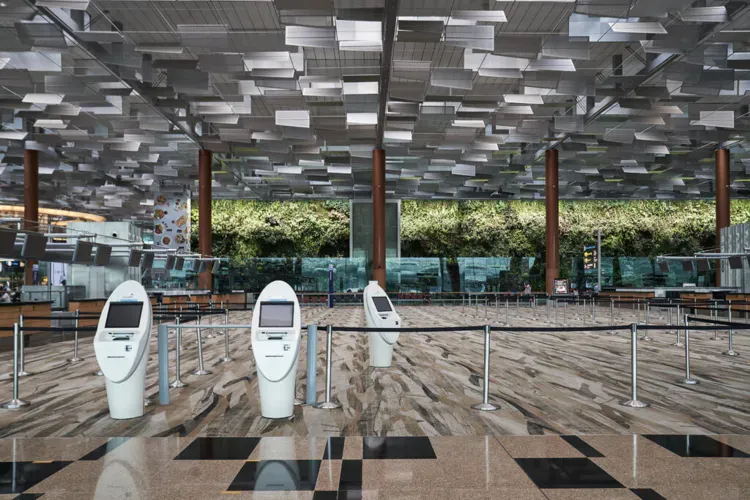
Before the outbreak, travelers at Changi Airport risked sensory overload. Now, the self-service check-in area in the terminal is empty. Photography by Lauryn Ishak.
Even after the epidemic is over, some functions of the airport for passengers who transit for a few hours cannot be easily changed. Jayson Goh said they had stopped operating the butterfly garden and cinema because people didn't want to hang out now.
On a recent Thursday, only a handful of passengers were ready to take off, some in neat personal protective gear. A few bored airport employees tapped their phones, waiting for passengers who had not come.
US Virgin Islands: Horses can't go hungry
Jennifer Olah is the owner of an equestrian nonprofit on Santa Cruz Island, and the pandemic has brought many concerns, from food shortages to theft. Photography by Meredith Zimmerman.
When the pandemic hit, Jennifer Olah had just signed a deed for a two-acre farm, the new home for her nonprofit equestrian organization on west Santa Cruz Island.
In 2013, Cruzan Cowgirls began rescuing and rehabilitating horses on the island and educating local youth on animals. Ms Jennifer Olah relies on volunteers to help take care of the horses, as well as income from international tourists. Visitors can take a horse ride through Rainbow Beach and through the island's rainforest for about an hour and a half and cost about $100 each, not including tips. Jennifer Olah receives approximately 25 visitors per week.
On March 23, 2020, all non-essential businesses on Santa Cruz Island were forced to close and cruise ships were completely unable to come after the stay-at-home order began. During what was supposed to be the busiest season of the year, Jennifer Olah's clientele disappeared. Of her 25 horses, she said: "We were forced to close in March, but our horses had to be looked after and we had to find a way to support our family."
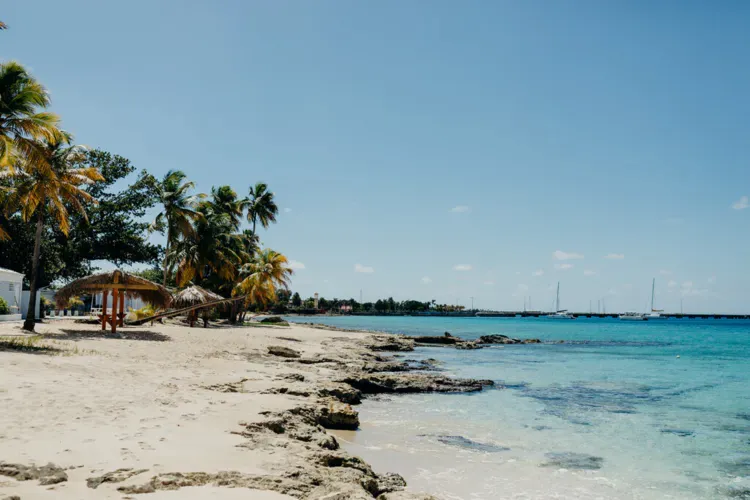
A quiet beach west of Santa Cruz Island on a recent Sunday. In 2020, visitor numbers to the U.S. Virgin Islands were down more than 60 percent from the previous year. Photography by Meredith Zimmerman.
Santa Cruz Island is one of the three islands that make up the U.S. Virgin Islands. It is an archipelago in the Caribbean Sea and belongs to the territory of the United States. Typically, tourism accounts for 60% of its gross national product. But in 2020, visitor numbers to the U.S. Virgin Islands fell by more than 60% from 2019, from more than 2 million to just over 800,000 (excluding December).
On Santa Cruz Island, that means doubling the island's unemployment rate, increasing petty theft, and closing many businesses, some for as long as 10 months. For Cruzan Cowgirls, food shortages, theft, and everything else ensues.
"It's really expensive to buy feed here, because all the feed needs to be brought in from outside the island," says Jennifer Olah. The same goes for veterinarians. Since there is no equine doctor on the island, when a horse is sick or needs care, the veterinarian can only be flown in from the mainland. Including proper medical care and food, it costs $500 per horse per month.
Because she has no regular employees to pay monthly, she is ineligible for a loan through the Paycheck Protection Program. To survive the shutdown, she took to Facebook and other social media to express her plight, holding several fundraisers online.
“I kept thinking, what would happen to these horses if they didn’t make it through. It was really scary, and now that fear hasn’t gone away.” Photo by Meredith Zimmerman.
"We texted everyone we've ridden with for the past eight years, asking them to donate or buy a gift certificate that will be used once the ban is lifted," said Jennifer Olah. Their efforts raised enough Funding to get through a difficult March.
Frequent thieves also worry her, saying: "A few months ago, all our horse feed was stolen. Another time, our generator was stolen and all our harness was stolen twice. , and several saddles and saddle pads. Someone even stole a few chickens and ducks, and last Friday, three horses were stolen, but the horses were later found.”
To save money, she reduced her horses' feed from 18 pounds a week to 16 pounds. With a 10% reduction in feed, the existing food will last longer.
At one point, she started to suffer from insomnia and even developed ulcers, and arranged for herself a weekly therapy session because she was overwhelmed.
"I've been thinking about what the horses are going to do if they don't make it through. It's really scary, and now that fear hasn't gone away. Because we don't know when it's going to end."
Despite the challenges, she is in good spirits. Jennifer Olah has seen tourism start to rebound. The island has reopened again, and with more and more tourists arriving by air over the past few months, there are queues for some of the island's popular restaurants.
"We've barely survived, and we're still adjusting," she said. However, tour groups are back in operation, albeit still below pre-pandemic numbers, with an average of 15 tourists a week, compared with 25 previously.
"I think the vaccine has given people some confidence that they can start moving around," said Jennifer Olah. "We've had a lot of health experts visiting us lately. Yesterday, I took four nurses on a tour of the horse farm."
Like my work?
Don't forget to support or like, so I know you are with me..
Comment…